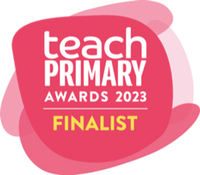What are SATs?
The statutory national curriculum assessments – more commonly known as SATs, short for “standardised assessment tests” – are a set of national tests sat by primary school children in the UK. Typically, children take the SATs twice during their time at primary school:
- Key Stage 1 (KS1) SATs are sat in Year 2. These tests are informal, take place in a regular classroom with no time limits, and are assessed by teachers. Currently, KS1 tests are compulsory, although they will become optional in 2024.
- Key Stage 2 (KS2) SATs take place in Year 6 before children finish primary school and move on to secondary education. These tests are more formal than in KS1, with set times in which to sit them and external marking. SATs at KS2 are scored from 80 to 120, with a score of 100 representing the expected standard.
These tests aim to assess how children are progressing in their education. Sat in May each year, parents won’t typically receive results of KS1 SATs (unless requested), although they will usually be told whether their children are working at the expected level as part of their end-of-year report. KS2 SATs results are published in July.
How do SATs assess literacy?
At both KS1 (Year 2) and KS2 (Year 6), SATs are designed to assess three main areas:
- English reading – The SATs English reading tests are designed to test learners on their reading fluency and comprehension. At KS2 level, this may include assessing their understanding of characters and themes in writing, plus their ability to “read between the lines” and interpret the meaning of a text.
- Spelling, punctuation and grammar (SPaG) – SPaG tests focus on a learner’s ability to use correct grammar, punctuation, vocabulary and spelling. This is used to assess their writing ability and technical understanding of English.
- Mathematics – The maths component of SATs assesses both arithmetic and mathematical reasoning. The arithmetic element focuses on addition, subtraction, multiplication and other mathematical calculations. But the reasoning element is more about applying logic and critical thinking to mathematics, meaning learners are asked to interpret a question and use maths to solve it.
Some schools also test students on their speaking, listening, science and writing skills, but these are based on informal teacher assessments rather than standardised exams.
Literacy is key to all three core assessment areas. This is most obvious for the reading and SPaG tests, which directly assess learners’ literacy, but it’s also vital for the reasoning component of the maths tests since learners will need to understand and accurately interpret the questions to answer them. To this extent, SATs not only test learners on their literacy skills but also their ability to apply these skills in different areas.
Why are SATs important?
Designed to assess educational progress among primary school children, SATs are important for schools and learners for many reasons:
- Identifying support requirements – At a basic level, knowing whether a child is performing at the expected level for their age is important for identifying areas where they may need more help. Teachers and parents can therefore use SATs results to work out how to support learners inside and outside the classroom.
- Assessing school performance – Primary schools are evaluated in part by the percentage of students who reach or exceed the expected standard in SATs. These results then inform local league tables, allowing parents to see how schools are performing in comparison to other schools in the area. SATs results are therefore one factor that parents may use when deciding where to send their children.
- Grouping students into sets in secondary school – Most secondary schools use the Year 6 SATs results to inform the process by which students are grouped into sets or streams, particularly for maths and English (although sometimes for other subjects as well). SATs results can therefore be important for making sure learners receive the best support for their educational needs once they start secondary school.
It should perhaps be noted that SATs are controversial for some, with parent and teacher groups both suggesting they put too much pressure on young learners. Recent research has also found that SATs can also result in a short, sharp increase in teacher anxiety levels as well - so sometimes a reminder of why they’re there can be helpful!
However, it’s worth keeping in mind that SATs performance won’t have a direct impact on learners' prospects: they will not be asked to resit exams if they “fail”, nor do SATs results affect whether a child will be accepted into a state secondary school.
While it makes sense to take Year 6 SATs seriously – they’re the culmination of a learner’s primary school education and provide valuable information to secondary schools – sitting these tests shouldn’t be a source of unnecessary stress for young learners.
How good literacy benefits learners going into secondary school
A meta-study by John Hattie (2009) states that students who don’t develop strong reading skills by the middle of primary school “are handicapped from learning in other curricula”. In other words, literacy is a vital cross-disciplinary skill because it helps students to understand learning materials and express themselves effectively.
This insight has helped to inform the development of what is known as “disciplinary literacy”, which the Education Endowment Foundation describes as “an approach to improving literacy across the curriculum [that] recognises that literacy skills are both general and subject-specific, emphasising the value of supporting teachers in every subject to teach students how to read, write and communicate effectively in their subjects.”
Developing strong literacy skills at primary level is essential for ensuring a smooth transition to secondary school, and as SATs assess those vital literacy skills, these tests are an important stepping stone in your learners’ education.





